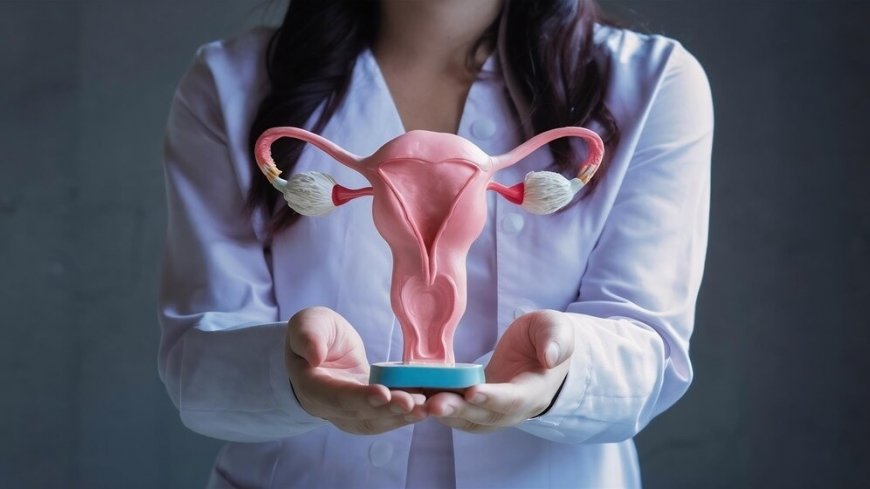Women Health: 5 Severe Gynecological Cancers And How to Prevent Them
Gynecological cancers pose significant health risks to women, but early detection and preventive measures can improve outcomes. Here are 5 major types of gynecological cancers, along with tips on how to reduce your risk.

Cancer is a complex illness, affecting millions of people across the globe, with varying causes, symptoms, and outcomes. Scientific evidence indicates that men are generally more susceptible to developing cancer due to a protective gene that women carry. However, in India, an opposite trend emerges, where women are increasingly being diagnosed with cancer.
Gynecological cancers encompass a range of malignancies that affect women, including breast cancer, ovarian cancer, and cervical cancer. Various factors can contribute to a woman’s risk of developing cancer, including genetics, environmental influences, and lifestyle choices. Despite this, many women are unaware of their potential risk for developing gynecological cancers or the symptoms that may indicate an underlying issue. This shift highlights the critical need to identify factors that increase cancer risk in women and to remain vigilant for early warning signs to ensure prompt treatment.
Understanding Gynecological Cancers
Gynecological cancers encompass any cancer that begins in a woman’s reproductive organs and can manifest with a range of symptoms depending on the specific type and severity of the cancer.
- Ovarian Cancer originates in the ovaries and is associated with risk factors such as family history, advancing age, and specific genetic mutations like BRCA1 and BRCA2. Symptoms can be subtle and include bloating, pelvic pain, and changes in bowel habits.
- Cervical cancer starts in the cervix, with the primary risk factor being human papillomavirus (HPV), a common sexually transmitted infection. Symptoms can include abnormal vaginal bleeding, pain during intercourse, and unusual vaginal discharge.
- Vulvar Cancer affects the external genitalia, known as the vulva. Risk factors can include HPV infection, smoking, and certain precancerous conditions. Symptoms often involve persistent itching, burning, and abnormal growths or sores on the vulva.
- Uterine/Endometrial Cancer begins in the lining of the uterus, called the endometrium. Risk factors include obesity, age, hormone therapy, and a history of not having children. Common symptoms are abnormal vaginal bleeding, pelvic pain, and unintended weight loss.
- Vaginal Cancer starts in the vagina, the canal leading from the cervix to the outside of the body. Risk factors include HPV infection, smoking, and exposure to diethylstilbestrol (DES) in the womb. Symptoms can include abnormal vaginal bleeding, pain during intercourse, and unusual vaginal discharge.
The Importance of Early Detection
According to Dr Nikhil Mehta – Consultant Surgical Oncologist, HCG Hospital, Jaipur, “Women undergo various screenings during their annual gynecological exams, which can be crucial in early cancer detection. The Pap test and HPV test, typically part of a pelvic exam, are routine procedures during a typical OBGYN visit. These tests collect cells from the cervix with a swab to check for abnormalities and the presence of human papillomavirus (HPV), offering an essential tool for early detection in the fight against cervical cancer.”
The Pap test, referred as the Pap smear, is used to screen for cervical cancer by collecting cells from the cervix. This test can identify existing cancerous cells as well as detect precancerous changes that could indicate an increased risk for developing cervical cancer in the future. Women as young as 21 typically undergo routine Pap tests during their annual visit to the gynaecologist, with doctors often recommending a frequency of every three years for future tests.
The HPV test, similar to the Pap test, involves collecting cervical cells, but it is designed to detect a broader range of issues, including other types of cancers and the presence of human papillomavirus (HPV). Current guidelines suggest that women 30 years and older should receive both the Pap test and the and HPV test as part of their annual gynaecological exam.
Prevention is Key
- HPV Vaccination: Getting vaccinated against the human papillomavirus (HPV) is a critical step in reducing the risk of cervical cancer. The vaccine provides protection against the most common strains of HPV that are known to cause cervical cancer.
- Healthy Lifestyle Choices: Maintaining a healthy lifestyle can help lower the risk of gynaecological cancers. This includes eating a balanced diet, keeping a healthy weight, exercising regularly, and avoiding tobacco and excessive alcohol consumption.
- Regular Screenings: Regular screenings like Pap smears and mammograms are essential for early cancer detection. Following the recommended screening schedules based on age and risk factors can significantly increase the chances of successful treatment.
- Understanding Family History: Knowing your family’s medical history can give you insights into your own risk for gynecological cancers. Regular discussions with your healthcare provider about your family history can help tailor your preventive care to your specific risks.
Gynecological cancers are a serious concern for women, but they can be managed and even prevented with early detection and proper care. By focusing on preventive measures like vaccination, leading a healthy lifestyle, and undergoing regular screenings, women can reduce their risk of gynecological cancers. Awareness and education are key, and together we can help women take control of their health and well-being.
What's Your Reaction?



























































